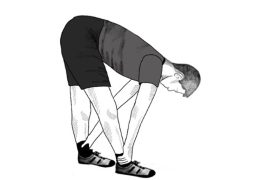While yoga offers numerous benefits, including increased energy, strength, and mental clarity, it’s possible to overdo it if not practiced mindfully. Yoga can be a powerful tool for managing stress and improving overall well-being. However, practicing too much or choosing styles that are too advanced or intense for your fitness level can lead to physical strain and injury. Finding balance is crucial; overexerting yourself without adequate rest can cause harm, while under-practicing may not yield the desired benefits.
Recognizing when you’re pushing too hard can involve listening to your body, adjusting the intensity of your practice, and allowing time for recovery. It’s essential to vary your practice, incorporate rest, and align your yoga routine with your body’s needs to avoid burnout or injury.
Signs You Might Be Overdoing Yoga and How to Address It:
1. Disrupting Your Sleep, Social Life, or Responsibilities While it’s rare, excessive focus on yoga—especially meditative aspects—can interfere with essential aspects of life such as sleep, social activities, or work. Ensure yoga enhances rather than hinders your overall well-being.
2. Ignoring Rest Days Pushing yourself too hard without adequate rest can lead to exhaustion and physical strain. It’s important to balance your yoga practice with rest, especially if you’re engaging in other strenuous activities.
3. Attending Classes That Are Too Advanced Participating in classes that are too advanced or intense for your level can increase the risk of injury. Beginners should start with entry-level classes and progress gradually based on their fitness level and experience.
4. Breathing Difficulty and Excessive Soreness If you find yourself breathless or experience persistent soreness, it might indicate that you’re pushing too hard. Yoga should involve focused breathing and manageable physical exertion. Persistent pain or discomfort should be addressed with professional guidance.
5. Risks of Overdoing Yoga Excessive practice can lead to injuries such as strains, sprains, and chronic pain, particularly if done without proper form or preparation. Hot yoga, in particular, may increase the risk of dehydration and muscle injuries due to the heat.
Expert Tips for a Healthy Yoga Practice:
1. Opt for Mini-Practices Short sessions (15-20 minutes) can be effective and lower the risk of overuse injuries. It’s a good approach for both beginners and experienced practitioners.
2. Listen to Your Body Pay attention to signs of strain, shaking, or discomfort. If a pose feels too intense, take a break and revisit it later.
3. Explore Gentle Forms of Yoga Incorporate less physically demanding styles such as restorative or yin yoga to balance your practice and promote recovery.
4. Incorporate Rest Days Allow time between intense sessions to let your muscles recover. Rest days are crucial for building strength and preventing injuries.
5. Delve into Yoga Philosophy Understanding the deeper philosophies of yoga, such as nonviolence and self-compassion, can help maintain a balanced approach and prevent overexertion.
6. Consider Professional Guidance Private or small group sessions with a therapist can provide personalized adjustments and help you advance your practice safely.
Yoga is beneficial for enhancing energy, strength, and stress relief, but balance is key. Overdoing it can lead to injuries and muscle pain. Adjust your practice based on your body’s signals, incorporate diverse styles, and ensure you’re practicing it in a way that supports your overall well-being. If you experience significant discomfort or persistent issues, consult a professional for guidance.
Disclaimer:
The information contained in this article is for educational and informational purposes only and is not intended as a health advice. We would ask you to consult a qualified professional or medical expert to gain additional knowledge before you choose to consume any product or perform any exercise.








